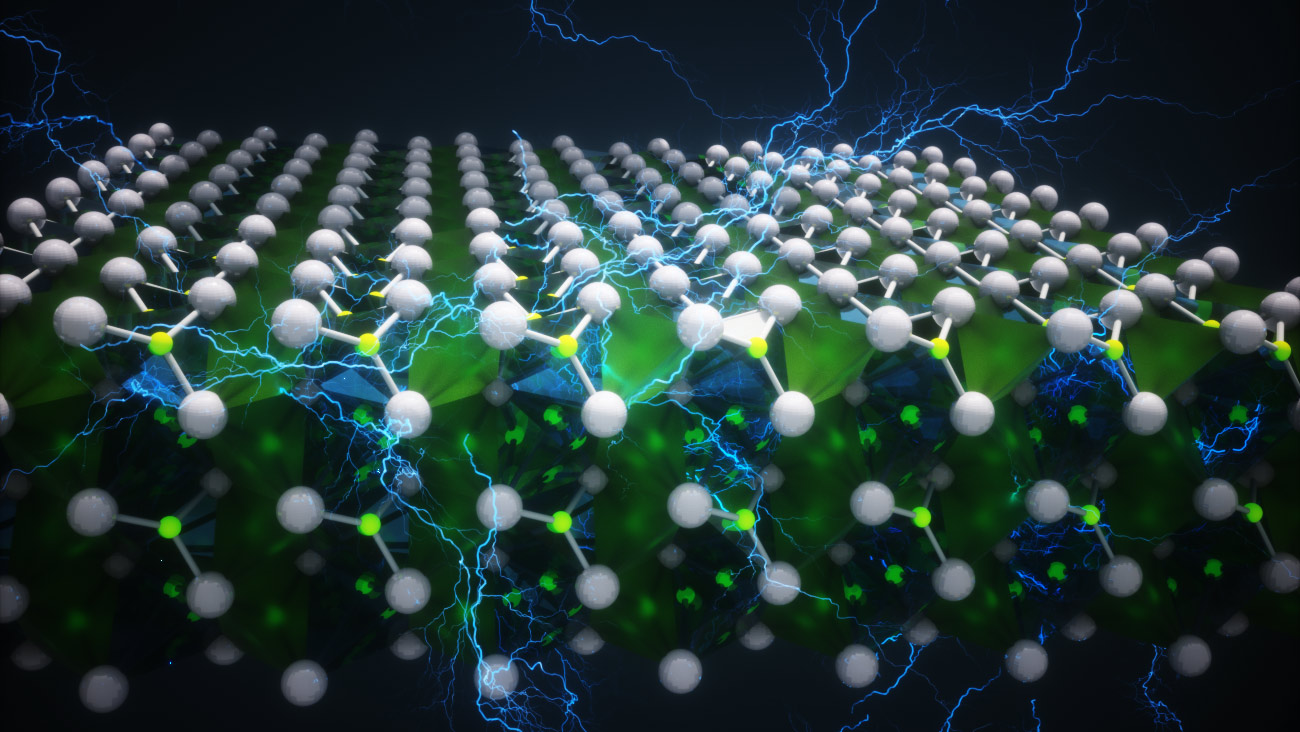
Transistors or “microchips” partially explain why our paper-thin laptops can perform much more complicated tasks than their clumsy, gigantic predecessors. To maximize computing capabilities, engineers are trying to make transistors into the smallest size possible, and pack billions of them into a single computer chip. However, despite the rapid evolution of manufacturing techniques, traditional transistors are approaching their physical limit — those nanoscale devices cannot afford to shrink down any further after a certain point — and that hinders the development of computing capabilities.
Yet as data keep pouring in, the demand for computing capabilities continues to rise. Novel devices, especially new storage and logic devices with higher speed and lower power consumption, are needed to unleash new computing capabilities while breaking down major obstacles against existing computing systems. Recently, a group of researchers from China pointed to ferroelectric devices as a promising solution, and published a review article introducing emerging ferroelectric materials and devices for intelligent computing. It was published in Intelligent Computing on September 7.
Ferroelectric materials are quite versatile and widely used as special-purpose memories in aerospace storage devices among others. They have special polarization characteristics, a magnetism-like property that can be retained even after the external electric field is removed. But when the film thickness is reduced to less than 10 nm, most of the conventional ferroelectric materials lose their polarization characteristics at 25°C, and thus are not adaptive to the nanoscale integrated circuit (IC) fabrication process.
New ferroelectric materials with high scalability potential can solve these issues. “The discovery of the polarization effect in high-κ materials, which are the commonly used gate-oxide materials for nanoscale MOSFETs [metal-oxide-semiconductor field-effect transistors], is a breakthrough for the mass production of ferroelectric transistors,” the researchers pointed out. They reviewed two prominent examples of polycrystalline Hf-based and amorphous oxide-based ferroelectric materials, and briefly described some recently reported novel materials and devices. All of them are found compatible with the complementary metal oxide semiconductor (CMOS) fabrication process.
For the state-of-the-art ferroelectric devices, the researchers categorized them into low-power logic devices, high-performance memory cells, and neuromorphic devices, and summarized each in detail. The summaries covered the development of the devices and their capabilities in breaking the “heat wall”, the “memory wall”, and the von Neumann bottleneck respectively.

Ferroelectric negative capacitor field-effect transistors (NCFETs) as low-power logic devices are able to break the “heat wall”, which hinders the enhancement of the main frequency of the processer owing to the rising power density and heating effect. “Reducing the driving voltage of the chips is a potential method to break the ‘heat wall’, and its feasibility is highly dependent on the SS [subthreshold swing] of the transistor,” the researchers explained. “Ferroelectric NCFETs, together with the voltage amplification effect, can overcome Boltzmann’s tyranny and achieve an SS of sub-60 mV/dec. Thus, they are regarded to have one of the most promising device architectures for ultralow-power applications and can reenable the rapid development of the IC industry.”
Ferroelectric capacitor-based random access memory (FeRAM) and ferroelectric field-effect transistor- (FeFET-) based memory, categorized as high-performance memory cells, show excellent performance in dynamic random access memory (DRAM) replacement and embedded applications.
The ferroelectric capacitor, unlike the conventional DRAM capacitor, can store information through the Pr charge, which is nonvolatile, and possesses a much higher charge density per area. “Therefore, replacing the dielectric material of a flash device with doped-HfO2 ferroelectrics or amorphous oxide ferroelectrics to realize a FeFET is an alternative method to further reduce the power or delay of these memories,” the researchers said. This will help bridge large performance or area gap between the logic device and memory cell, overcoming the so-called “memory wall”.
Moreover, FeFETs can be used as neuromorphic devices to break the von Neumann bottleneck. The von Neumann bottleneck refers to the delay and power issues caused by the inefficient data transfer between the originally separated memory module and logic processor, to which neuromorphic computing — the imitation of the neuron system for information processing — is a possible solution.
In a neuromorphic system, artificial neurons and synapses are the most important components, and FeFETs can implement both reportedly. For applications in neurons, FeFETs have been used as pulsed neural networks; for artificial synapse applications involving spike neural networks (SNNs) and convolutional neural networks (CNNs), FeFETs are applicable because of their ability to simultaneously perform storage and processing functions. In addition, ferroelectric tunnel junctions (FTJs) have attracted significant attention for synaptic device applications owing to their compact device structure, nondestructive readout scheme, and high write/read access speeds.
In conclusion, the researchers indicated that if the tradeoff between process compatibility and device performance can be achieved, NCFET, FeRAM, or FeFET memory and ferroelectric synapse devices can be integrated into the same chip to build a multifunctional intelligent computing system. “Based on the progress achieved in the ferroelectric device-processing technology, the integration of low-power logic, high-performance memories, and neuromorphic systems on one chip seems to be feasible with continuous process improvement,” they emphasized. “This will help realize the development of high-performance and high-efficiency intelligent computing systems in the future.”

